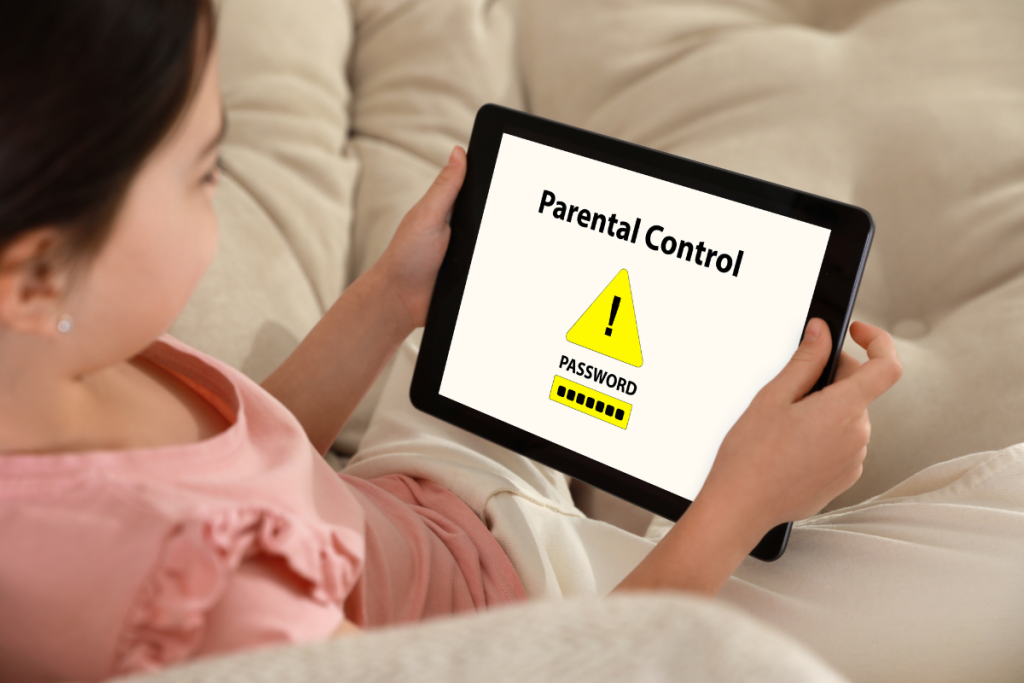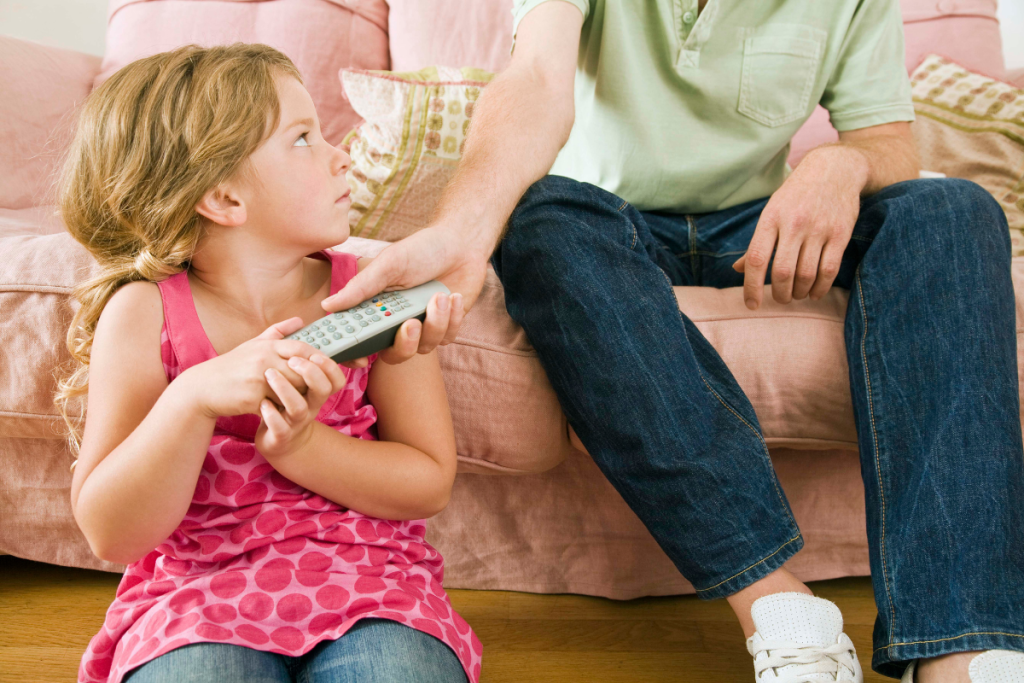Now more than ever before, screen time has become ubiquitous in our daily lives. From smartphones to tablets, laptops to televisions, screens are everywhere, and it’s no surprise that children are increasingly exposed to them.
While screens can be a valuable tool for learning and entertainment, excessive screen time has been linked to various negative consequences, including sleep problems, poor academic performance, and mental health issues.
As a parent, finding the right balance between allowing your child to use screens and limiting their screen time can be a daunting task. Fortunately, parental controls can be a powerful tool in helping your kids find that balance.
This article explores the screen time struggle and how parental controls can help your kids maintain a healthy relationship with technology.
The Role Of Parental Control In Managing Screen Time
Parents’ screen time struggle is one big challenge in regulating their children’s use of digital screens such as smartphones, tablets, computers, and televisions. As technology has become more prevalent in our daily lives, children are increasingly exposed to screens at an earlier age and for extended periods. While screens can provide educational and entertainment value, research has shown that excessive screen time can negatively affect a child’s physical and mental health.
Studies have linked excessive screen time to sleep problems, obesity, poor academic performance, and mental health issues such as depression and anxiety. Furthermore, excessive screen time has been shown to interfere with children’s social skills and emotional regulation development. The American Academy of Pediatrics (AAP) recommends that children aged 2 to 5 have no more than one hour of screen time per day, and children aged six and older have consistent limits on screen time and use screens in shared family spaces.
This is where parental controls come into play. Parental controls are software tools that allow parents to limit their children’s screen time, block inappropriate content, and restrict access to certain apps or features. By setting up parental controls, parents can monitor and regulate their children’s screen time, which can help prevent the negative consequences of excessive screen time.

Parental controls can also help parents avoid conflict when managing their children’s screen time. Children may resist or resent parental attempts to limit their screen time, but with parental controls, the rules are enforced automatically, reducing the need for arguments or negotiation.
Excessive screen time has negative consequences on a child’s physical and mental health, and parental controls can help parents manage screen time by setting limits, blocking inappropriate content, and reducing conflict. Parents can use parental controls to ensure their children maintain a healthy relationship with technology.
The Impact Of Screen Time On Children
This is a topic of great concern for many parents and researchers alike. While screens can be a valuable tool for learning and entertainment, excessive screen time can have various negative consequences.
Some of the negative consequences of excessive screen time include;
A. Sleep Problems
One of the most well-known adverse effects of excessive screen time is the disruption of sleep patterns. Studies have shown that the blue light emitted by screens can suppress melatonin production, a hormone that helps regulate sleep. This can lead to difficulty falling asleep, poor sleep quality, and daytime sleepiness.
B. Poor Academic Performance
Excessive screen time has also been linked to poor academic performance. Studies have found that children who spend more time on screens tend to have lower grades and perform worse on tests. This may be due to a lack of focus and attention and reduced time spent on other activities such as homework and reading.
C. Mental Health Issues
There is growing concern about the link between excessive screen time and mental health issues such as anxiety and depression. Studies have found that children who spend more time on screens are more likely to experience symptoms of depression and anxiety. This may be due to social media’s negative social and emotional impact, cyberbullying, and other online behaviors.
This is not to say screen time is always bad. Below are some examples of the positive effects of screen time:
1. Learning Opportunities:
Screen time can provide children with a wealth of learning opportunities. Educational apps, videos, and games can help children develop problem-solving, creativity, and critical thinking skills. Additionally, screens can provide access to educational resources that may not be available in a child’s physical environment.

2. Entertainment Value:
Screens can also provide entertainment value for children. From watching their favorite TV shows and movies to playing games, screens can be a source of enjoyment and relaxation. Additionally, screens can allow children to connect with friends and family far away.
While screens can have positive and negative effects on children, it’s important to remember the need for balance. Too much screen time can lead to negative consequences such as sleep problems, poor academic performance, and mental health issues. On the other hand, screens can also provide valuable learning opportunities and entertainment. It’s up to parents to find the right balance for their children, considering their individual needs and circumstances. This may involve setting screen time limits, encouraging alternative activities, and modeling healthy screen habits. By finding the right balance, parents can help ensure that their children can enjoy the benefits of screen time while minimizing the negative consequences.
Understanding How Parental Controls Can Help In Setting Screen Time Limits
Parental controls are software or device settings that allow parents to limit and monitor their children’s access to digital media. The purpose of parental controls is to help parents regulate the amount of time their children spend using devices and the type of content and apps they can access. This can help to protect children from harmful content and encourage healthy habits around screen time.
Several types of parental controls can be used to achieve these goals. The three most common types of parental controls are time limits, content filters, and app restrictions.
Time limits allow parents to set specific times when their children can use devices and limit the total time spent on a device per day or week. This can help ensure children have a healthy balance between screen time and other activities.
Content filters enable parents to block access to specific types of content, such as violent or adult-themed media. This can help to protect children from exposure to inappropriate or harmful material.
App restrictions allow parents to control which apps their children can access, as well as limit in-app purchases or other features that could be harmful or costly. This can help to prevent children from accidentally or intentionally accessing inappropriate content or spending money without parental permission.
The benefits of parental controls are numerous. First and foremost, parental controls empower parents to control their children’s screen time and ensure they align with their family values and expectations. Additionally, parental controls can reduce conflict between parents and children by setting clear boundaries and expectations around device usage. Finally, parental controls can protect children from harmful content and predators.

Overall, parental controls are essential for parents in today’s digital age. By using them effectively, parents can help their children develop healthy screen habits and stay safe online.
Limiting Screen Time – How to Set Up Parental Controls
Parental controls are a powerful tool for managing screen time and ensuring your children’s safety online. Whether you’re setting up parental controls on a smartphone, tablet, or computer, the process is generally the same. Now let us consider step-by-step instructions for setting up parental controls on various devices and tips for customizing them to fit your family’s needs and troubleshooting common issues.
Step-by-Step Instructions for Setting Up Parental Controls on Various Devices ;
1. Smartphones
a. On iOS devices (iPhones and iPads), go to Settings > Screen Time > Turn on Screen Time.
b. Follow the on-screen prompts to set a passcode and choose your child’s device usage settings.
c. open the Google Play Store and download a parental control app for Android devices, such as Google Family Link.
d. Follow the on-screen prompts to set up the app and create your child’s Google account.
2. Tablets
a. On iOS devices, go to Settings > Screen Time > Turn on Screen Time.
b. Follow the on-screen prompts to set a passcode and choose your child’s device usage settings.
c. open the Google Play Store and download a parental control app, such as Google Family Link, for Android devices.
d. Follow the on-screen prompts to set up the app and create your child’s Google account.

3. Computers
a. On Windows 10, go to Settings > Accounts > Family & other users > Add a family member.
b. Follow the on-screen prompts to create a Microsoft account for your child and set up parental controls.
c. On Mac, go to System Preferences > Parental Controls and create a new user account for your child.
d. Follow the on-screen prompts to set up parental controls for the account.
Tips For Customizing Parental Controls To Fit Your Family’s Needs
Parental controls are essential for parents to protect their children’s online safety and privacy. By customizing parental controls to fit your family’s needs, you can ensure your children can enjoy the internet safely and securely. Here are some tips for customizing parental controls:
1. Identify Your Needs:
The first step in customizing parental controls is identifying your family’s needs. Determine what types of content you want to block, what kinds of websites and apps you want to limit, and what time limits you want to set for your children’s online activities. Consider the ages of your children, their interests, and their level of internet usage.
2. Choose the Right Parental Control Software:
Once you have identified your family’s needs, it’s time to choose the right parental control software. Many options are available, so take the time to research and compare different products. Look for software that offers the needed features, such as content filtering, time management, and activity monitoring.
3. Set Age-Appropriate Controls:
Different age groups require different types of parental controls. You should block access to specific websites and apps for younger children and limit their screen time. For older children, monitor their activity and block access to inappropriate content.
4. Educate Your Children:
Parental controls are not foolproof; educating your children about online safety and responsible internet use is essential. Talk to them about the dangers of sharing personal information online, cyberbullying, and online predators. Encourage them to report any suspicious activity to you.
5. Review And Adjust Settings Regularly:
Parental controls must be regularly reviewed and adjusted to meet your family’s needs. As your children grow and their internet usage changes, you may need to adjust the settings to keep up with their changing needs.
By customizing parental controls to fit your family’s needs, you can create a safer and more secure online environment for your children. Remember to review and adjust your settings regularly, and you may need to use monitoring tools to monitor your child’s device usage and educate your children about online safety to ensure they are responsible digital citizens.

Troubleshooting Common Issues Relating To Parental Control Settings
Parental control settings are essential for parents to help keep their children safe online. However, like any technology, they can sometimes encounter problems. Here are some tips for troubleshooting common issues relating to parental control settings:
1. Check Your Settings:
Ensure your parental control settings are correctly configured before assuming an issue. Double-check that the right websites, apps, and content are being blocked or allowed. Ensure that you have set up the controls to your satisfaction. Also, check that your device is compatible with the parental control settings.
2. Ensure That Your Software Is Up-To-Date:
Ensure the software you use to set up parental control settings is up-to-date. This ensures you have the latest bug fixes, security updates, and compatibility fixes.
3. Check For Conflicting Settings:
If you are having issues with parental control settings, it may be because your device has incompatible settings. For example, if you have parental controls and an ad-blocker enabled, they could conflict with each other. In such cases, try disabling one of the settings to see if the issue is resolved.
4. Disable Third-Party Software:
If you use third-party software that could interfere with your parental control settings, try disabling it temporarily to see if it resolves the issue.
5. Check Your Internet Connection:
Some parental control settings require an internet connection to function correctly. If you are experiencing issues, ensure your internet connection is stable.
6. Try Resetting Your Device:
If none of the above steps work, reset it to its default settings. This will erase all data and settings on the device, including parental control settings. You will need to set up parental control settings again after the reset.
7. Contact Customer Support:
Contact the manufacturer’s customer support if you need help after trying the above steps. They can help you resolve the issue or provide further guidance.
It is essential to regularly monitor and update your parental control settings to ensure that they are working effectively. Additionally, discussing safe online behavior with your children is critical. By combining parental control settings with open communication, you can help keep your children safe online.
What Are The Best Practices For Making Downtime Easier On Your Children
First, you need to create a family media plan. Here’s how to get started:
1. Involve The Children In The Process
Creating a family media plan is a great way to manage screen time. It is essential to involve children in the process as it helps to foster a sense of responsibility and ownership. Children in the planning process are likely to stick to the rules they helped create. You can hold a family meeting to discuss and develop the plan together. Ask your children what they think is reasonable and fair, and try to find common ground. Ensure the goal is clear and concise so that everyone understands it.

2. Set Clear Rules And Expectations
Setting clear rules and expectations is essential once you have created a family media plan. This means that everyone in the family should understand the guidelines and the consequences of breaking them. For example, you can set a rule that says no screens during meals or after a particular hour in the evening. You can also set expectations for when and how screens can be used, such as only for educational purposes or after completing homework. Be sure to communicate the rules and expectations so everyone is on the same page.
3. Stick to the plan
Creating a family media plan and setting rules and expectations is only effective if everyone sticks to it. This means that parents should lead by example and follow the program themselves. Consistency is critical when it comes to managing screen time. Stick to the rules you have set, and enforce consequences when they are broken. Over time, the family will adjust to the new routine, and screen time management will become easier.
You can also encourage alternative activities. These activities include;
1. Outdoor Play
Encouraging alternative activities is an integral part of managing screen time. Outdoor play is a great way to get children moving and away from screens. Plan family outings to parks, nature trails, or other outdoor spaces. Encourage your children to ride bikes, play sports, or engage in other physical activities. Outdoor play can help children improve their physical health, social skills, and creativity.
2. Reading
Reading is another excellent way to encourage alternative activities. Encourage your children to read books, magazines, and newspapers. Make a habit of reading to your children, or set aside time for them to read independently. Reading can help improve literacy skills.
3. Creative Projects
Encourage your children to engage in creative projects that don’t involve screens. This can include drawing, painting, building with blocks, or creating crafts. Set up a designated area in your home where your children can work on their projects. Encourage them to experiment with different materials and techniques. Creative projects can help children develop problem-solving skills, boost self-esteem, and stimulate creativity.
Also, you, as the parent, need to lead by example. This is where modeling healthy screen habits comes in.
Modeling healthy screen habits is a critical component of managing screen time in your family. As a parent, it’s essential to set an example for your children by demonstrating responsible and healthy screen use. By doing so, you can help your children develop a positive relationship with technology and avoid the negative consequences of excessive screen time. You can do this by;
1. Limiting Your Own Screen Time
One of the most effective ways to model healthy screen habits is limiting screen time. It’s easy to get caught up in the endless stream of notifications and social media updates, but it’s important to recognize when you’re spending too much time on your devices. Try setting a time limit for yourself and sticking to it, or designating certain times of the day as screen-free zones.
2. Avoiding Screens During Family Time
Another way to model healthy screen habits is by avoiding screens during family time. Meal times, family outings, and other shared experiences are essential for bonding and building relationships. By putting your devices away during these times, you can show your children that they are your top priority and that you value spending quality time with them.

3. Engaging In Activities That Don’t Involve Screens
Finally, engaging in activities that don’t involve screens is essential. This can be a great way to model healthy screen habits and encourage children to explore other interests and hobbies. Whether playing outside, reading a book, or doing a craft project, many fun and engaging activities don’t involve screens. By participating in these activities with your children, you can show them that many enjoyable things don’t involve technology.
Supervising And Setting Limits On Using Screen Time Is Easier With Parental Controls
Managing screen time for children can be challenging for parents. However, balancing allowing children to use screens and limiting their screen time is crucial. In this article, we have discussed the negative consequences of excessive screen time, the positive effects of screen time, and the importance of finding a balance.
Parental controls are a powerful tool to help parents manage their children’s screen time. We have explored what parental controls are, the types of parental controls available, and the benefits of using them. We have provided step-by-step instructions for setting up parental controls on various devices and tips for customizing them to fit your family’s needs.
By following these best practices for managing screen time outlined in this article, parents can help their children develop a healthy relationship with technology and avoid the negative consequences of excessive screen time.

Leave a Reply